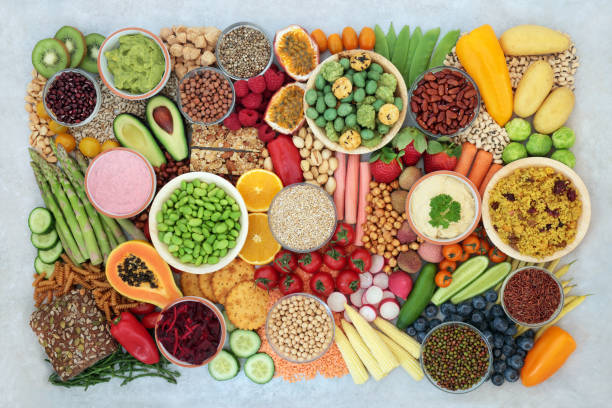Foods to Support Brain Health and Manage Dementia Symptoms in the United States
Could adjusting your everyday meals help slow cognitive decline? This guide summarizes what the evidence shows about diet and brain health, describes the MIND eating pattern, and provides practical, U.S.-centered food and shopping tips so readers can make sustainable choices to support cognition and lower dementia risk.

Why diet matters for brain health
An expanding body of research ties dietary patterns to how the brain ages. The MIND diet — developed from Mediterranean and DASH research — was designed specifically to target cognitive decline. Multiple studies report that stronger adherence to the MIND pattern is linked to substantially lower Alzheimer’s risk and slower cognitive decline. At the same time, the Centers for Disease Control and Prevention (CDC) notes that uncontrolled diabetes, high blood pressure, heavy alcohol use, and smoking raise dementia risk. Taken together, these findings support using food-based strategies as part of a broader approach to preserving brain health.
What the MIND diet is and why it’s useful
The MIND diet (Mediterranean-DASH Intervention for Neurodegenerative Delay) emphasizes plant-forward foods selected for nutrients that may protect the brain and advises limiting specific foods associated with poorer cognitive outcomes. Key elements include:
- Prioritizing vegetables (especially leafy greens), berries, nuts, whole grains, beans, and olive oil.
- Regularly including other plant-based foods with modest amounts of lean protein.
- Explicitly restricting five food types: red meat, fast fried foods, pastries, cheese, and other sweets.
- Framing the pattern as a long-term lifestyle to follow over months and years rather than a short-term “diet.”
Large observational studies have shown meaningful differences in risk: people with the highest MIND adherence had up to about a 53% lower risk of Alzheimer’s disease in early research, while moderate adherence was associated with around a 35% reduction. More recent analyses (including work published in 2025) continue to support links between MIND-style eating and lower dementia risk.
Leafy green vegetables: a weekly target and practical ideas
Why they matter: - Dark leafy greens like kale, collard greens, and spinach are rich in folate, vitamin E, carotenoids, and flavonoids — nutrients associated with reduced dementia risk.
Target and how to get there: - The MIND diet recommends roughly six servings of leafy greens each week. - U.S.-practical tips: buy fresh when in season or choose frozen greens (they retain nutrients and are often cheaper). Add greens to salads, smoothies, omelets, soups, or lightly sauté them as a side.
Berries: memory-supporting fruits to eat regularly
Why they matter: - Berries (blueberries, blackberries, mulberries, and others) contain anthocyanins and flavonoids with anti-inflammatory and antioxidant properties linked to better memory and slower cognitive decline.
Target and how to get there: - MIND suggests at least two berry servings per week. - Practical U.S. tips: use fresh berries when in season or rely on frozen berries year-round in cereal, yogurt, or smoothies. Frozen berries are often cost-effective and convenient.
Make olive oil your main added fat
Why it helps: - Olive oil is central to the Mediterranean foundation of the MIND diet and is preferred over saturated fats. Diets higher in monounsaturated fats and lower in saturated fats appear more favorable for brain and heart health.
How to use it: - Use extra-virgin olive oil for dressings, as a finishing oil, and for low- to medium-heat cooking. Replace butter or partially hydrogenated fats with olive oil where suitable.
Nuts, whole grains, and beans: daily and weekly building blocks
Why these foods are included: - Nuts offer healthy fats, whole grains provide fiber and micronutrients, and beans supply plant protein and fiber — all supportive of metabolic and vascular health relevant to the brain.
Practical tips: - Keep a small handful of mixed nuts for snacks. - Swap refined breads, pastas, and cereals for whole-grain versions. - Use canned low-sodium beans in salads, soups, stews, or grain bowls several times each week.
Foods to limit and healthy substitutions
The MIND diet flags five food categories to restrict because they are linked to worse cognitive outcomes: red meat, fast fried foods, pastries, cheese, and other sweets. Substitution ideas include:
- Replace frequent red-meat meals with poultry, fish, or plant-based proteins.
- Choose baked, grilled, or roasted preparations rather than deep-fried foods.
- Pick fruit, yogurt, or nuts over pastries and sugary desserts.
- Use lower-saturated-fat cheese sparingly or opt for plant-based alternatives if preferred.
Managing alcohol and metabolic risks with diet
Public health organizations, including the CDC, note that excessive alcohol use, uncontrolled diabetes, and high blood pressure raise dementia risk. Dietary choices that address these issues can also support brain health:
- Limit alcoholic drinks and follow your healthcare provider’s guidance on safe intake.
- Cut added sugars and refined carbs to support blood-sugar control.
- Favor low-sodium choices and emphasize vegetables, whole grains, and healthy fats to help manage blood pressure.
- Maintain regular physical activity and follow medical advice about medications and chronic-condition management.
U.S.-focused shopping and meal tips for accessibility and convenience
Many Americans face constraints such as limited time, tight budgets, or modest cooking skills. Practical strategies to meet MIND targets include:
- Frozen produce: Frozen leafy greens and berries keep nutrients, are budget-friendly, reduce waste, and simplify cooking.
- Canned and bulk options: Low-sodium canned beans and shelf-stable whole-grain boxed items provide convenience.
- Minimal-cook meals: Compose a simple plate of whole grains (brown rice, quinoa) + beans or lean protein + a large portion of vegetables with a drizzle of olive oil.
- Ready-to-eat choices: Use pre-washed salad greens, pre-chopped veggies, and rotisserie or grilled poultry as occasional time-savers while watching portions and the overall pattern.
- Cultural and personal preferences: Adapt plant-forward choices to fit favorite cuisines — for example, beans and greens in Latin-influenced dishes or whole-grain versions of traditional staples.
Adopting the pattern over time: realistic steps
- Begin by adding more leafy greens and a couple of berry servings per week, then switch refined grains to whole grains and incorporate beans and nuts.
- Replace one red-meat meal per week with poultry, fish, or a plant-based entree, increasing this over time.
- Make olive oil the default added fat at home.
- Monitor progress across months; the MIND approach is most effective when followed consistently over the long term rather than as a short-lived change.
When to involve healthcare professionals
Diet is one component of dementia risk reduction and symptom management. Seek professional advice if:
- You have medical conditions (diabetes, hypertension, kidney disease) that need customized dietary guidance.
- You take medications that might interact with specific foods or nutrients.
- You are worried about weight loss, malnutrition, or sudden cognitive changes — get a medical evaluation.
Conclusion
A MIND-style eating pattern — emphasizing leafy greens, berries, nuts, whole grains, beans, and olive oil while limiting red meat, fried foods, pastries, cheese, and sweets — provides a research-backed, practical strategy to support brain health. When combined with attention to blood pressure, blood sugar, alcohol use, hearing health, and physical activity, food choices can be a meaningful element of a plan to manage dementia symptoms and support cognitive aging in the United States.
Sources
- Centers for Disease Control and Prevention (CDC): Reducing Risk for Dementia — https://www.cdc.gov/alzheimers-dementia/prevention/index.html
- AARP: What Is the MIND Diet? — https://www.aarp.org/health/healthy-living/what-is-the-mind-diet-brain-health/
(References to studies and statistics reflect research and summaries available as of 2025.)




